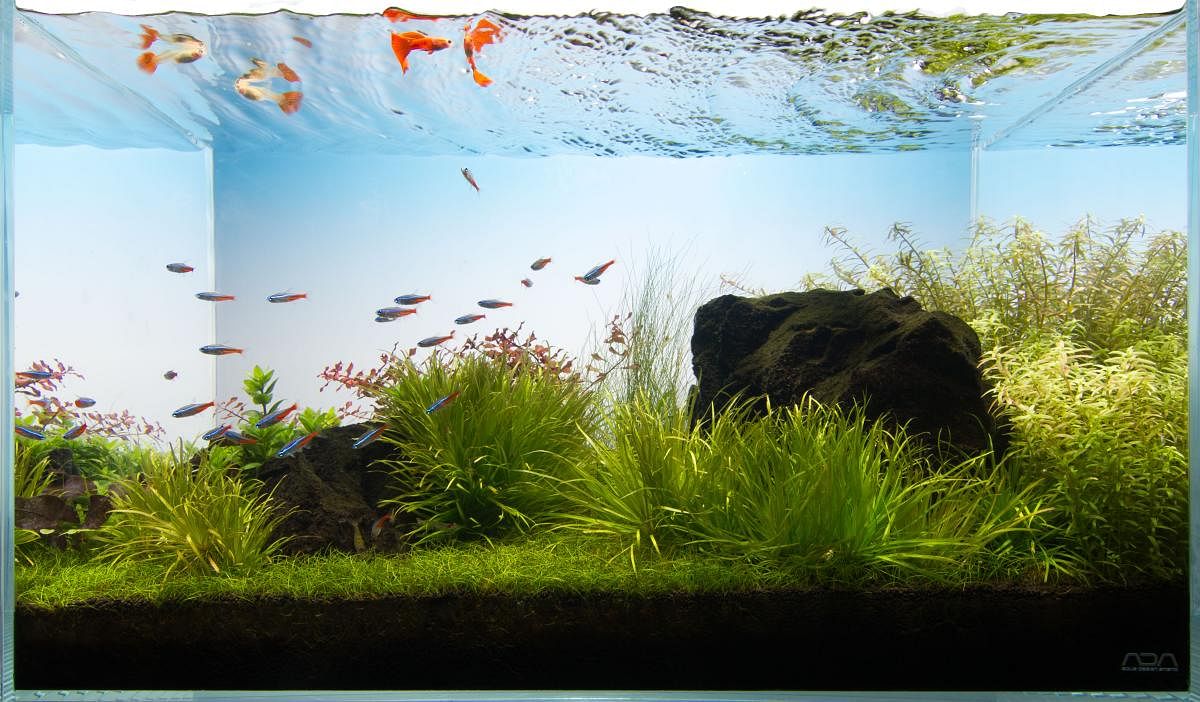
Designing and decorating an aquarium can be challenging despite it looking like a simple project. Aquarists talk about how one needs to focus on lighting and decor, while keeping the well-being of the fish in mind.
Right size
The size of an aquarium depends on the space available. As a rule of thumb, select the largest size possible. The surface area of an aquarium is important. “Height needs to be considered too. Marine and freshwater environments can benefit from taller aquariums, which provide superior conditions for certain species of fish and plants,” says Dhrubajyoti Lahiri of bangaloreaquarium.com. Adip Sajjan Raj, founder and CEO of Still Water Aquatics says that the standard size is a 60P aquarium, ie 60x30x36 cm. “A rectangle shaped-one is best to take cool photographs,” he adds.
Choosing a type
One can always use a custom-made tank or purchase a ready-to-use set. There are largely two types of aquariums — the regular one and nature aquariums.
“The regular aquariums are the ones with a glass tank containing a few fish. The latter has a lot of design inspired from nature, with many natural elements. This art of designing is called aquascaping,” says Adip.
Design it right
Creating a sense of depth is a must, says Adip. “You need to have open and closed spaces. The ratio of these spaces are like Yin and Yang,” he says. “One must be able to foresee how much the plants will grow and cover or block the view,” he adds.
When designing an ecosystem like an aquarium, one must ideally have a reference photo or a sketch, says Adip. If using wood, use pieces that have been weathered over a period of time. If using stones, make sure they will not leech out salts into the water. “This could alter the water chemistry,” he adds.
Invest in a proper substrate and quality hardscape materials like branched out pieces of wood and unique looking rocks, and carefully selected plants or synthetic decor, says Dhrubajyoti.
Design elements and well-being
If you have an aquarium with too much wood or stones, some fish could feel uncomfortable. “Each fish has certain movement requirements. Designing an aquascape according to the fish is important. There is a ratio in everything we do and we apply the Golden ratio,” says Adip.
The Golden ratio is a mathematical ratio. When used in a design, it fosters organic and aesthetic, natural-looking compositions. The Iwagumi aquarium design is tranquil, where the placement of stones is done in a beautiful and soothing way.
Fish size could vary from 1/2 cm to 4-5 inches and the number should depend on the size of the aquarium, he adds. Select fish that enjoy similar temperatures, water chemistry, are compatible to each other’s behaviour, and occupy different levels of the aquarium, says Dhrubajyoti.
Strategic positioning
In the 80s and 90s, the aquarium was placed in the outhouse or balcony, but now things have changed. “Aquariums have now moved the television from the living room to the bedroom. People dine around the aquarium and spend time with it,” says Adip.
Dhrubajyoti points out that aquariums should not be placed near windows or heating and cooling ducts. “Do not place your aquarium where it will receive direct sunlight. Sudden changes in light can stress fish. When turning canopy lights on or off, have room lights on for at least 30 minutes,” he says. “Do not leave lights on throughout the day, as just like nature, fish and plants require dark periods as well,” he sums up.